WHAT’S INSIDE
Why incentive travel continues to be an effective motivator
Reimagining the future of your incentive travel program
Dos and don’ts of selecting incentive travel destinations
MAGAZINE

5 event break ideas that help attendees recharge
Your attendees can plan your events for you. Seriously.
EVENT MARKETING AND INCENTIVE TRAVEL | VOLUME 24
from the desk of SARAH HAINES
Senior Vice President, Event Solutions
Hello! What an exciting time for event professionals.
It’s no secret we’re in the midst of ongoing industry transformation, officially saying “so long” to the generic event, embracing the demand for unique and authentic incentive travel experiences, and answering the call for a more direct and measurable correlation between events and business results.
See how our teams will be positioning clients to achieve success with a heightened focus on event design in the year ahead.
Viewing events as the investments they are
Event design strategies—and the design’s impact on audience engagement—influence desired business outcomes (sales, market share, talent acquisition, etc.). Strategies like audience segmentation, content and learning paths, a host of corresponding activation strategies, as well as post-event engagement, help drive the hard-power metrics outlined above. But when it comes to impact, there’s more. Soft-power metrics like deeper relationships and engagement beyond the event itself contribute to short- and long-term success.
Positioning events for measurable growth
Data and analytics position event professionals to maximize ROI, and provide event marketers with much-needed data to support decision making. Learning from key metrics like lead generation, brand sentiment and customer acquisition will help refine future events for continued success.

Future-proofing growth
As always, providing insights into emerging event design trends and their potential impact on business growth will be key to how ITA Group supports our clients. We must embrace initiatives like diversity, equity, inclusion and belonging (DEIB) and sustainability within ESG policies, as well as innovations like micro-experiences, sensory engagement, technology tools and AI-powered personalization. These will exist at the forefront of event strategy as we work to evolve alongside our clients. Keep reading for more on how we’ll be leaning into event design and achieving results through attendee-centric experiences in 2024.
contents
02
Why incentive travel continues to be an effective motivator
08 Reimagining the future of your incentive travel program
1 4 Dos and don’ts of selecting incentive travel destinations
20
5 event break ideas that help attendees recharge
26 Your attendees can plan your events for you. Seriously.
insights magazine | 1

Why incentive travel continues to be an effective motivator


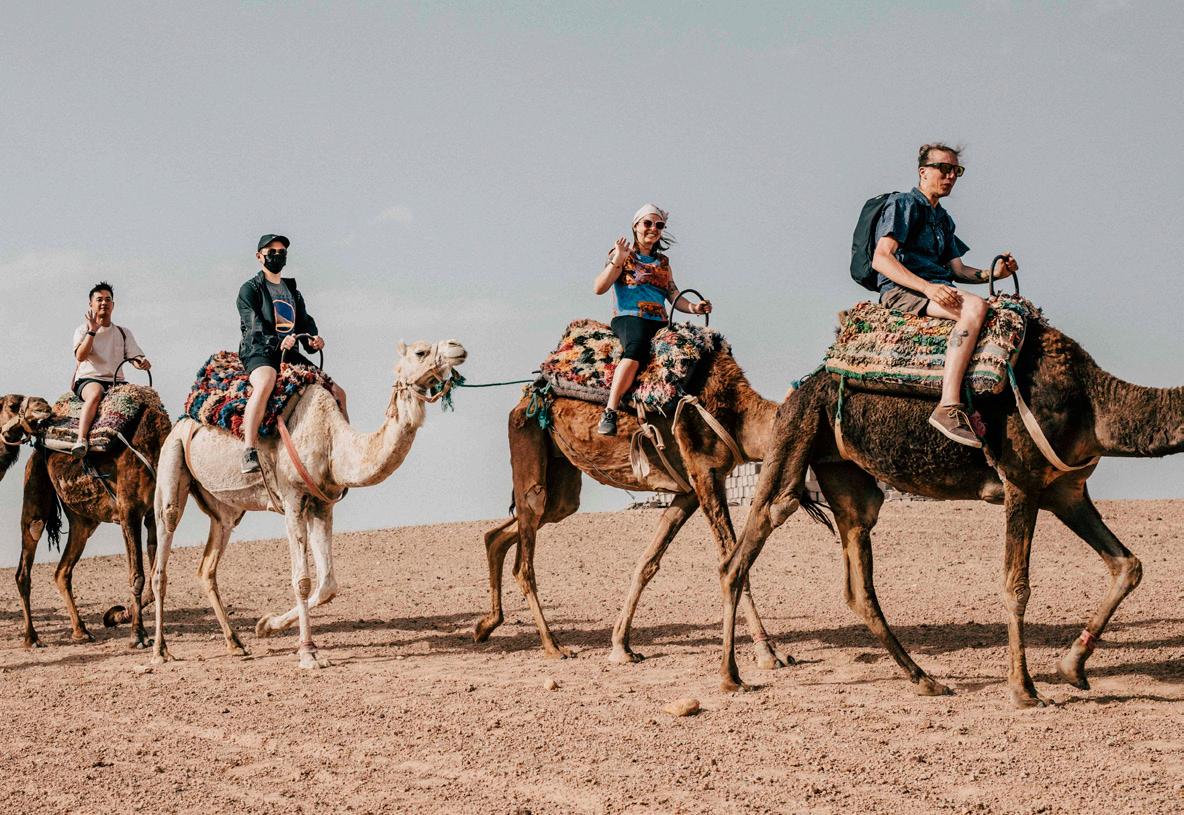
What’s the value of including incentive travel in your corporate strategy? Is it just another business expense? A headache to plan and operate? Or is it a strategic investment in growing talent and profits? Depending upon your perspective, it may be all these things. Read on to learn more.
insights magazine | 3

Studies show team members want to do meaningful work and make valuable contributions to an organization. This discretionary capital can be tapped by purposefully recognizing and motivating people with travel experiences for their exceptional achievements.

Incentive travel has been an effective motivator for decades—and continues to be an important element of business management. In a recent survey conducted by SITE, 96% of respondents agreed that their incentive travel programs were “very effective or effective in achieving program objectives” as measured by increased sales/revenue. Plus, the non-financial benefits are many including employee engagement, networking, team building and sharing best practices during the trip.
Design and delivery of compelling incentive travel programs is essential to meet program objectives. Finding the right balance for both your employees and organization requires a thoughtful approach. Make sure you’re asking these questions regularly.
What audience do I want to motivate?
Incentive travel is used to motivate and reward salespeople, channel sales teams and other employees. Incentive Magazine notes that top-performing companies use non-cash awards (including incentive travel) in 90% of their sales programs compared with just 75% of average firms; in channel sales, it’s 81% vs. 59%.
In another study across these audience types, incentive travel awards were found to create strong emotional connections for the recipient to the organization resulting in higher levels of performance, trust and retention according to Scott Jeffrey of Monmouth University. Jeffrey’s study also found most participants felt “motivated or highly motivated by incentive travel rewards.”
4 | insights magazine
Are my program rules fair, reasonable and attainable?
If team members feel the goal is not achievable, they’ll disengage and perform at mediocre levels. It’s reasonable to provide an incentive that top performers can stretch to and achieve; however, moving the “middle 60” is essential in hitting an organization’s goal. By leveraging professional incentive program designers, your rule structure can benefit from their experience, analytics and insights in your competitive marketplace.
Does my incentive travel program provide “choice”?
You’ve found a cool location, but how do you make it memorable, meaningful and motivational for all your participants? Begin by providing a choice of activities and excursions within a bigger themed event to accommodate all lifestyles and life stages. One hot trend right now is “partying poolside.” VIP cabanas. Private bungalows. Club couches. Hanging daybeds. And those are just the seating choices! Add in volleyball throw downs, water polo matchups, a rockin’ DJ, an open bar and buffet lunch and you’ll have plenty of options for everyone to choose from.
Have I considered the impact of regulations on my incentive travel award program?
There are myriad regulations and tax requirements that impact incentive travel awards. The IRF’s research indicates that over 77% of companies are “very confident” in understanding how the rules and regulations impact their non-cash incentive programs. Yet the study also revealed a dichotomy that showed many companies identified “legal and regulatory issues where none existed,” resulting in 46% of firms reworking the underlying business purpose and 43% changing the entire design of their program, perhaps unnecessarily. Consult with your legal advisor before altering any aspects of your program design associated with regulatory accommodations.


Will my technology promote sharing adventures and information at my event?
The complexities involved in incentive travel planning require expertise and coordination and the right technology to make it all come together seamlessly. Event apps are integral to the participant experience, but also to your organization’s ability to track, monitor and later analyze your success metrics. Using the latest technology facilitates guest registration with real-time data to effectively manage your attendees’ travel experiences. Plus, technology helps attendees connect with one another by sharing what they’re doing through posts and pictures. Apps push out important notifications on planned activities as well as lending themselves to interactive gamification that keeps engagement running high.
Strategy is the difference between travel & experience
People want to earn awards and recognition for their exceptional accomplishments—and incentive travel is still a preferred achievement award. Top-performing brands understand this because of their own experience and available field research that have confirmed incentive travel's effectiveness in comparison to cash and gift cards.
For incentive travel to be truly worth the effort, it must be designed in a way that makes it difficult for an individual to duplicate on their own. Putting thought to and answering the earlier questions will make a difference in planning your next incentive travel program that participants will talk about for years to come.
See how this aftermarket parts distributor client drove sales growth and organizational culture with an incentive travel program.
info.itagroup.com/travel-story


 SUCCESS STORY
SUCCESS STORY

Reimagining the future of your incentive travel program
 By: Erica Lalk, Senior Manager–Strategy Team Leader
By: Erica Lalk, Senior Manager–Strategy Team Leader
I often hear clients resistant to make changes to their incentive trip structure because their winners love what they do now. If they’re happy with what’s being offered, program owners think it’s best not to tamper with anything. They think: What if top performers don’t like the changes that we make? Why mess with a good thing?
8 | insights magazine
It’s important to step back and remember why we’re doing what we’re doing. It’s to motivate your audience to produce more. It’s to reward and recognize your top talent. When brands execute on their goals, their top performers are left feeling valued and motivated. There’s nothing better than hearing the following comments during a program operation:
> “ I did NOT see that coming! ”
> “ That gift was so thoughtful! ”
> “ You thought of everything! ”
> “ I can't wait to see what you all do next year! How can you top this? ”
How do you ensure those sentiments are heard? By keeping your people on their toes!
Personalizing the incentive travel experience
You’ve heard us say this before, and we’re saying it again: Personalize everything.
We’re not talking about adding their name to anything you can print it on and calling it a day. It means tailoring the experience and message to the personality of each winner.
A survey is a great way to find out what incentive travel winners like and dislike, then you can tailor their amenities to them.
Remember, sounds, smells, tastes, all transport us back to a memory. We want to pique their senses so they return to the trip time and time again. Ask them for their preferred beverage of choice and have it waiting in their room upon their arrival. Ask them what song comes to mind when they think about the upcoming trip and build a customized a playlist for activities.
insights magazine | 9
Focusing your budget on impactful on-site moments
If you’ve always traveled internationally, consider staying domestic. A luxury experience can still be created with less travel time. Plus, this more than likely opens money to enhance the on-site experience and focus on the small touchpoints throughout the way.
Maybe you don’t go to a destination that everyone is aware of, or even consider going down a tier in hotel accommodations. Try taking them somewhere less obvious and focus on memorable moments along the way, such as activities like a cooking class with celebrity chefs or getting the VIP treatment. This will surprise them and have them sharing on their social handles, “I didn’t think [insert locale] could be that much fun!”
Recently, we’re seeing the trend of people wanting personal time on these trips. If you allowed a full day of unscheduled activities on their own, does that open money to extend your trip by a day? Is this something your group would value?
Or find a private island and send everyone there for the day as a group and let them plan their own day with exclusive opportunities to enjoy water sport activities or simply relax on the beach. Go a step further with beach towels and chairs with their names embroidered on them.
Or flip that—is your group busy with family activities and carry heavy work schedules? Maybe cut a day and take care of the itinerary for them by maxing out every single second of their time away from home.

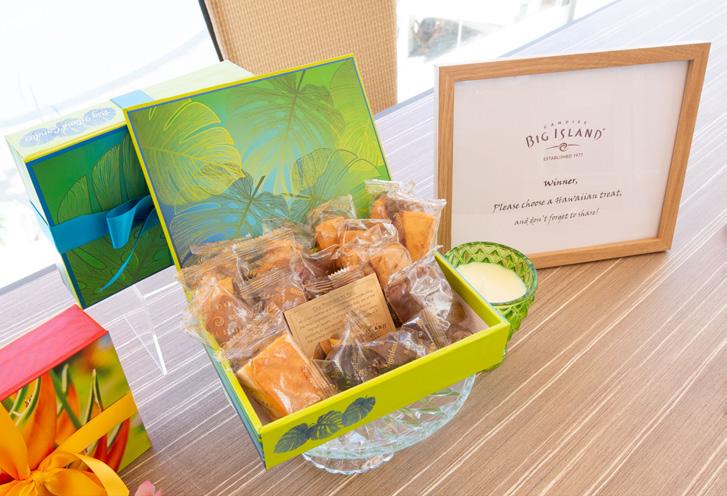
Enhancing your on-site experiences
Creating highly memorable and authentic experiences is what incentive travel is all about. Trips build lasting memories, improve workplace camaraderie and provide tangible experiences more memorable than monetary bonuses.
But how exactly do you take those small touchpoints along the way and amplify them into something more memorable?
When planning your incentive program, incorporate the surrounding culture into your itinerary as much as possible. Travel is all about experiencing new cultures and stepping out of your comfort zone. If you hear a street musician that’s unique and exciting while on your site inspection, book them as your welcome entertainment! See a local artist on the street painting something spectacular? Ask them to craft a custom piece of art for your attendees.
10 | insights magazine
Better yet, have them come and be part of your program and tie the gift back to that experience. Your guests will be blown away: “You mean, they created this art just for us?”—talk about a “wow” moment.
Don’t underestimate the element of surprises. Scientific studies have shown that unexpected incentives and awards tap into parts of the brain connected to learning and motivation.
Here are a few you can try:
1. Switch them to first-class and/or business airfare —no matter the individual, sitting in first-class makes you feel special!
2. Upgrade your final night's entertainment to be a headliner before they take the stage— this is how you get that response, “I did not see that coming!”
3. Offer your top performers an upgraded suite and one-on-one time with executives.

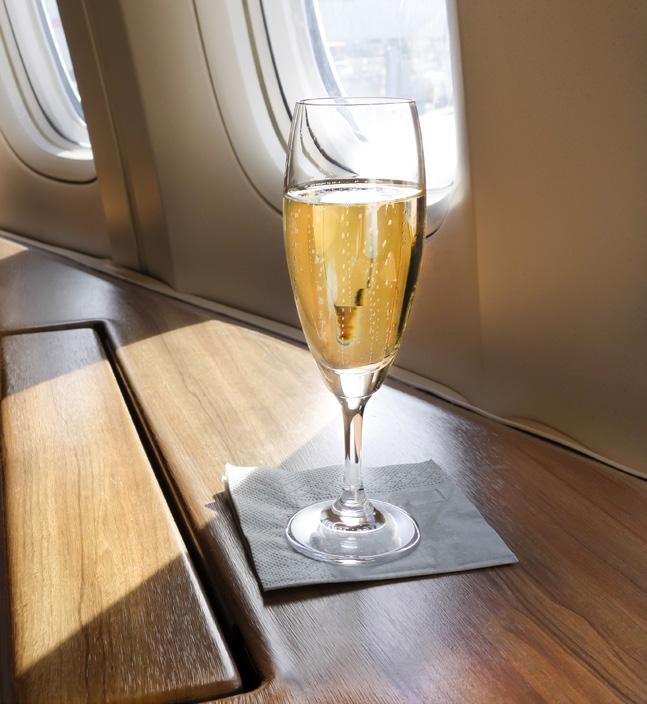
You can go a step further and design nightly amenities that tie to their day—or tease them for what’s going to happen the next day.
We had an event in the location where scenes from Top Gun were filmed. When they returned from the event, we had the infamous Ray-Ban sunglasses that Tom Cruise wore waiting in their rooms. Along with the sunglasses was a note reminiscing of the memory together: “We hope that every time you wear these aviators you’ll smile and remember all the fun we had tonight together.”
(And if you’re wondering—yes, we did think about the fact that those sunglasses would be too big for some people's face. On the amenity card we offered the option for them to come down the next morning at breakfast and swap them out for an alternate pair of smaller aviator glasses, which led to many smiles and comments of, “You guys think of everything!”)

insights magazine | 11
SUCCESS STORY
Reimagining your gifting experience
Instead of the newest and greatest tech gadget, think differently. How can you make the gifts more thoughtful and creative? There are many ways to provide a unique and cost-effective experience.
1. SUPPORT LOCAL VENDORS
If you know your people have spent the day walking around and exploring a new locale on their own and are ready to put their feet up, why not offer locally made health and beauty products to help them relax? Incorporating local businesses will help you have a big impact without breaking the bank. (For example: "We know you had today to explore the city on your own, so please relax tonight and put on this foot relaxation cream created right here in Prague by local vendors.")
2. ALLEVIATE AN ANNOYING CHALLENGE
We've all been there. Open our luggage only to realize we forgot a hat. So why not offer a hat gifting experience on site to snag something that fits their vacation vibe. You can also include a packing tip on the amenity card to get the hat home safely to really nail that notion, “Wow, you thought of everything!" (For example: "We know that remembering to pack a hat can be a challenge—please enjoy this pick-a-hat gifting experience to select a hat that matches your vibe.")
3. PERSONALIZE BASED ON ACTIVITY FEEDBACK
Take note of those who are signing up exclusively for R&R activities, and offer a pop-up shop for them to pick out some super comfy athleisure attire. The same goes for those choosing adventurous activities. Celebrate their zest for life with a chance to pick out a new active gear piece.
4. PROVIDE THE OPPORTUNITY TO GIVE BACK
Giving makes you feel happy. Talk to your local contacts and find a project that ties back to your company's passion projects—or just do something that is locally of much need. For example, after donating books to a local school, have the principal come and give thanks as well as see if the kids want to come and share their gratitude. (I did this once in Tanzania and it's a memory that I'll never forget. The kids loved performing and showing off in front of everyone.)
12 | insights magazine
Avoiding stagnancy by curating new experiences
When I'm asked, how do you continue to amaze your winners year after year? My simple answer is: Always make it feel different. It's impossible for your winners to compare year over year when the trip each year feels incomparable. And you can never lose when you make your winners feel special. The current potential for experimentation and engaging and exciting through new experiences should not be understated. If anything, you should be more afraid to not make changes to your current incentive travel program. Constantly evolving and changing your incentive travel not only makes planning the trip more fun, but it also makes for uniquely personalized journey for your winners year after year. Leave them with something to talk about. Most importantly, leave them wanting more!


Today’s organizations have many sources and places for data to be generated. To learn how to use data creatively to personalize event experiences, download our white paper.
info.itagroup.com/creative-data
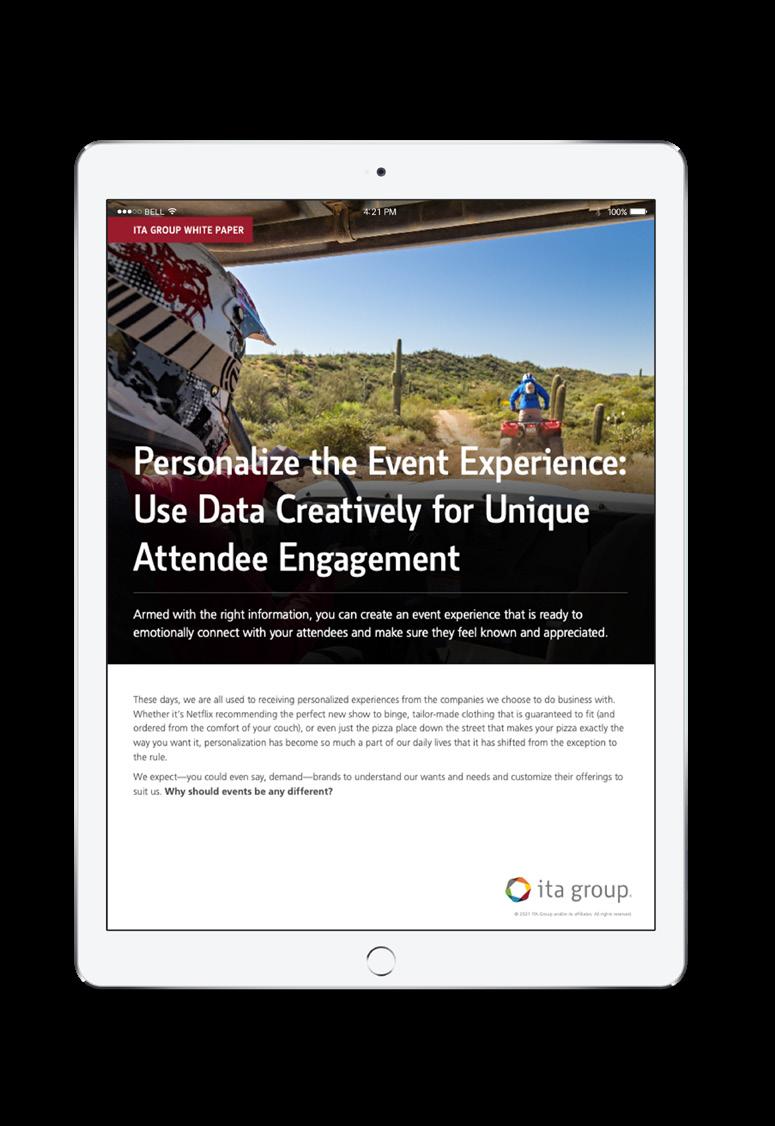


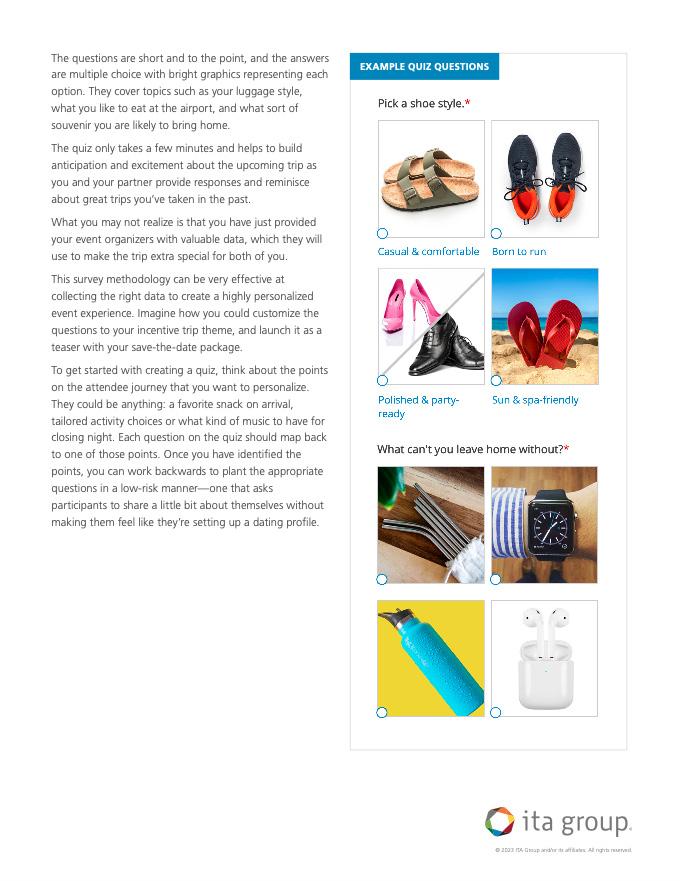
insights magazine | 13
FREE RESOURCE
DOS AND DON’TS OF SELECTING INCENTIVE TRAVEL DESTINATIONS

 By: Jodi Swailes, Event Destination Strategist
By: Jodi Swailes, Event Destination Strategist
Choosing the right incentive travel destination involves much more than simply booking the latest hotspot. Today’s travel trends point to a variety of considerations event designers must weigh before charting a course.
Our expert buying team travels the world scouting locations. They know where to go. And why. When consulting with clients to match budgets and goals with incredible trip itineraries, they keep these tips top of mind.
14 | insights magazine

Don't: Fixate on bucket-list destinations
Everyone’s dream destinations are different based on what activities they enjoy and what they’ve already seen. Especially for repeat earners, luxury resorts quickly become “been there, done that.” This doesn’t mean you have to scour the globe for hidden gems. Rather than focus on finding a destination that is truly unexplored, there are other ways to add novelty to create a memorable event.
We believe any destination can shine by incorporating immersive experience strategies. Even popular places like Italy and Mexico can be reimagined with meaningful surprises, like can’t-do-on-your-own opportunities tailored to the audience’s passions.
> During one trip for car enthusiasts, a custom vintage Fiat driving tour included lunch at Castello di Monsanto.
> London might be a popular destination, but an exclusive dinner on the London Tower Bridge Walkway gave attendees the best views overlooking the city that they wouldn’t have otherwise experienced.
> It didn’t matter if guests on an incentive trip to Italy had already seen Vatican City. We offered them an elevated experience by hosting a private dinner in the Sistine Chapel.
insights magazine | 15
Do: Understand the incentive travel audience
Incentive travel is about creating an unforgettable experience for the people who have earned the trip. Make travel design fun by framing your research as a travel personalization quiz. You can use gathered data to build out attendee journeys by persona. When designing around attendee needs and expectations, the destination becomes a meaningful backdrop for a personalized journey. Start your destination selection process by considering what you already know about your audience and their connection with your brand. Are they repeat earners? Channel partners who compete for trips from other brands in addition to yours? Regionally or internationally dispersed teams? It can be tempting to infer what locations will excite attendees based on role-related information. But digging deeper into audience preferences will help you create a stronger connection. Consider sending a simple survey that asks:
> How they want to spend their free time
> How far they’re willing to fly
> Whether they want to be immersed in a single place or explore a region
> Who they will be traveling with
As an event designer, it’s up to you to set up a storyline that excites participants and engages them from arrival to departure. Frame a return trip around traditions to build anticipation and foster a sense of belonging. Connect the experiences so they build off each other, peaking in a culminating event. And remember to book space early so you have more options during your desired dates. It’s no fun to find out your first choice is already booked.
Personalization helps drive event engagement. Read more about how to make collecting data fun for attendees, and take our quiz!

I'm amazed and appreciate the knowledge ITA Group brings to the table. Our CEO wanted an engagement plan to maximize relationship building with our most important customers while letting them enjoy their hard-earned trip… this was the best trip in our history. Unbelievable!
—VICE PRESIDENT, MARKETING, LEADING INSURANCE BRAND
16 | insights magazine
RESOURCE
FREE
info.itagroup.com/travel-quiz
Do: Flex your budget where it counts
Be smart about how you allocate your incentive travel budget. Global markets are dramatically affecting availability and rates. Factor in local costs for food and beverage spends, too.
Based on what matters most to attendees, invest in areas that will make an impact. This might mean opting for a more affordable destination so that a bigger allowance goes toward enhancing the experience, like securing luxury cars to greet attendees at the airport instead of charter buses.
Adjusting accommodations can also bring costs down and better serve attendees. A 4-star hotel in the city center is more suitable than a remotely located 5-star resort where it would be difficult for attendees to explore during their free time. Or opt for a boutique property with fewer amenities, but breathtaking views from the rooms and connections to a renowned local chef.
Don't: Ignore social impact considerations
More and more companies are aligning to their brand values when choosing event or incentive travel destinations. This could mean skipping spots with active anti-LGBTQ+ legislation or tying trips to corporate social responsibility (CSR) programs through volunteerism or other environmental, social and governance (ESG)-related elements.
During the destination selection process for an award-winning incentive trip hosted by a large technology brand, our client prioritized making a positive impact. They wanted to benefit a tourism-reliant location that was hard hit by the pandemic. We discovered that in Koh Samui, Thailand, the Samui Elephant Sanctuary depends almost solely on tourism donations. There hadn't been any for two years, jeopardizing the sanctuary.
To fully connect the attendee experience with the destination and CSR goals, we incorporated Asian elephant imagery into every detail of the trip, from the custom pre-mailer tied with a ribbon and elephant charm through on-site branding on embroidered pillows, miniature elephant figurines, wooden drink tokens and more. An exclusive two-day buyout of the sanctuary was a highlight for participants, who visited the elephants in small groups and helped make food that met the elephants’ special dietary requirements. This partnership gave back to the local economy and helped attendees build an authentic emotional connection to the culture. It also shed light on the decline of Asian elephants—a critical conservation issue.
insights magazine | 17
Do: Seek out knowledgeable experts
Photos don’t provide a complete picture of any place. A partner with on-the-ground experience can help navigate the selection process and take the stress out of longdistance planning.
Trusted relationships with destination management companies and resort staff are essential for creating the extra-special moments that incentive travel guests crave.
This trip attracted top management and owners, high-income guests who were blown away. I think everyone was very relaxed during the trip which made for a nice forum for building lasting relationships.
—VICE PRESIDENT, MARKETING, LEADING INSURANCE BRAND
Show your people awe-inspiring destinations, custom-crafted moments and unmatched life experiences. We’re sharing ideas from personalized global incentive travel experiences we’ve shaped over the years in our magazine: Redefine extraordinary.
info.itagroup.com/travel-inspiration


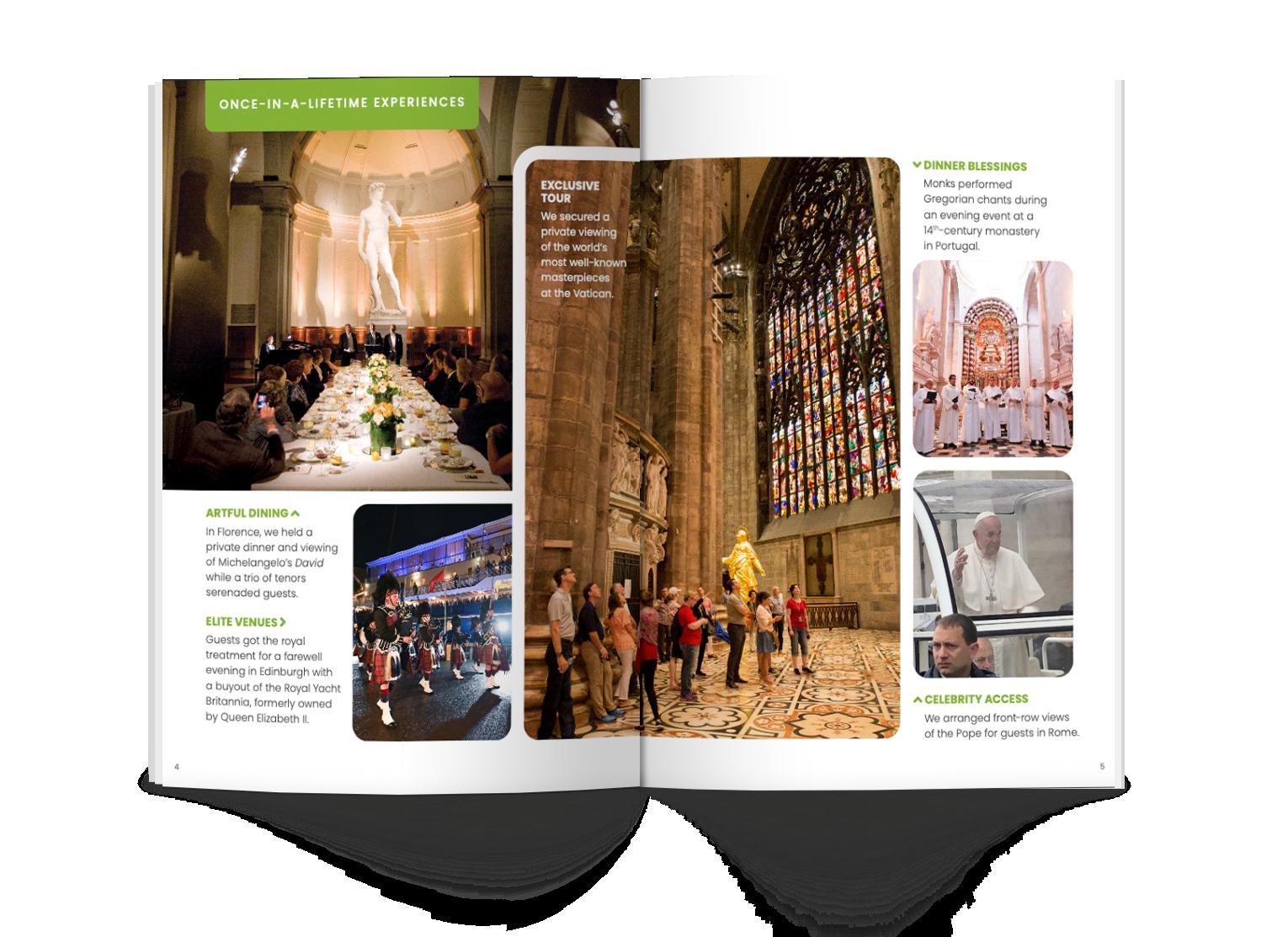
FREE RESOURCE
18 | insights magazine
Harnessing the emotional connection of immersive event experiences
Don’t just engage with your audience during the event. The event is a journey, not a destination, so create opportunities for measurable event success and continued engagement. For more ways to strategically immerse your attendees in your brand and effectively engage with them at your next experiential event, check out our ebook.
info.itagroup.com/immersive-event

EVENT BREAK IDEAS THAT HELP ATTENDEES RECHARGE
20 | insights magazine

It might seem like a content-rich, action-packed agenda would help increase event registration. But a study of brain science tells us:
If you want to attract attendees, remember many potential attendees may already feel busy in their daily lives.
So, design downtime to help them reenergize and take in the meaning and purpose of all sessions. Taking purposeful breaks (from 5–60 minutes) to refresh the brain and body boosts energy, productivity and ability to focus. Immersive experiences must include “rest stops” in the event attendee journey.
Having empathy for your attendees means you’re plugged into their motivations and requirements. Anticipating and planning for the physical, mental and even spiritual needs of participants creates a well-rounded experience.
Designing enriching, personalized “recess” moments give attendees the stamina they need to stay engaged throughout the event. Developing personas as part of the event attendee journey can help you plan breaks that align with audiences’ expectations and desires. Offering a variety of options as part of the pre-event attendee communication can help you gather helpful planning data—and build excitement for what’s to come.
Keep reading for five ways to help attendees clear their minds and feed their needs (sometimes literally!).
insights magazine | 21

1 2
Themed food fun
Say goodbye to the standard granola bar. Snack and meal breaks are crowdpleasing opportunities to put a pause on presentation mode and foster connection. Tie to a theme or create a new tradition. Try a “schoolhouseinspired” morning break complete with nostalgia-inducing favorites like Nutella and peanut butter sandwiches, paired with virtual trivia shared through the mobile app. Or kick off the afternoon with a tailgate. Team swag, a menu of mini corndogs, a nacho bar, and games like bags and ladder golf are sure to get everyone cheering.

Brain teasers and buzzer-beaters
Satisfy your audience’s competitive spirit. Quick and simple interactive games (think Minute-to-Win-It) add excitement and generate laughter. Keep in mind that introverts and extroverts recharge in different ways. What’s invigorating for some could totally drain the rest of the room. (One person’s icebreaker is another person’s deal-breaker, after all!)
Tabletop puzzles present an interesting alternative to tuning out and scrolling phone screens.
22 | insights magazine

3 4
Good to gather
Not all breaks need to be programmed. Adding a comfortable meditation room can create space for participants to pray or reflect in community, with some degree of privacy. And designing inviting gathering spots like a wellstocked café area or personalized gift zone can attract attendees who want to sip or shop on their own or with a pal. A creativity corner could offer art supplies or notecards with encouraging messages that could be sent to a nonprofit partner to also nourish the spirit during downtime.

Stretch or sweat
Exercise is fantastic for brain health as well as body fitness. Attendees who get in a workout might boast increased energy, focus, attention and decreased social anxiety because of their sweat session. Low-impact opportunities like chair yoga or tai chi can easily fit in breaks between speakers. A fleet of blender bikes for making smoothies transforms a 15-minute gap into an invitation to get moving and try something new. Schedule more rigorous options like a group spinning class or scenic run at a time attendees can take a longer break with a shower.
insights magazine | 23

5
Get outdoors
Whether your event is in a National Park or office park, there are likely natural elements nearby. A guided group walk or hike around the property can help participants meet their daily step goals and get to know each other. Even just providing simple maps with outdoor benches or pavilions noted can awaken attendees’ sense of adventure. Gamify it by creating a scavenger hunt with some of the plants and natural elements they can find on the grounds and encourage them to explore on their own or in teams.
Anticipating needs throughout the event
While event breaks are good between sessions, don’t be afraid to weave energizers and mini-breaks into presentations, too.
> Break up a long keynote with audience participation moments, like stretches or prompts to share with a neighbor.
> Let attendees know when and how their needs are being met by mentioning meal breaks as part of the script.
> If you don’t need technology to offer the presentation, consider moving a small workshop to a shaded outdoor area.
By anticipating attendee needs at each moment in the event attendee journey, you can show you care about how they feel and not just about sharing the content you have planned.
24 | insights magazine
insights magazine | 25 ITA Group transforms how business feels. EVENTS | INCENTIVES | RECOGNITION | LOYALTY | RESEARCH | LEARNING
Your attendees can plan your events for you. Seriously.
How involved are attendees when it comes to event design? Do you ask their preferences?
What are their expectations? Did the event meet them? While they can’t plan everything for you, they can make it much easier. The next two articles highlight why getting attendee, sponsor and stakeholder feedback before and after events can help you design personalized experiences that make attending a good use of time (and budget).
 By: Anna Boggs, Analytics Advisor
By: Anna Boggs, Analytics Advisor

ARTICLE 1
3 methods for collecting audience data
Connect emotionally with your audience and make them feel valued and known by collecting and using event data more effectively. If you understand what makes your audience tick, your marketing strategy can adapt over time to become even more effective and efficient.
Every interaction you have with an event attendee is a potential data point that can be used to inform your next engagement with them, and to achieve your business outcomes. But how do you collect that data? Look at three methods on the right you can implement immediately.
26 | insights magazine
Direct and easy
What’s the best way to get something you want? Ask for it! Your event registration site is a fantastic resource to gather feedback from attendees. They’ve already decided to register for your event, so why not ask for a little bit more information?
What’s their favorite color, snack and drink? Do they have a preferred temperature for their hotel room to be set when they arrive? These kinds of questions may seem small, but if you act on responses and provide personal custom touches, it can have a big impact on attendees’ overall experience.
1 3 2
Subtle and fun
Quizzes are a fun, unobtrusive way to get attendees engaged pre-event and collect valuable data. Keep in mind: Gamification requires more planning ahead of time to determine what experiences you will be able to customize and what information you’ll need to collect to categorize people accordingly. For example, attendees might be asked to fill out a quiz before registering to discover what their event profile and ideal event experience would be. Once the attendee profile is discovered, the registration site connects each attendee to the agenda track that their profile suggested they would most enjoy.
Creative and analytical
Historical data from past events can reveal which attendees engaged in which experiences, sessions, etc. Then, compare the data to future audience actions—did they become a lead, get a meeting, make a sale?
Segment data by the elements of an event: roles, technology, engagement, content tracks, session types, offsite activities, etc. Once the data is segmented, you can understand which elements were the most effective at producing the outcomes you’re looking for in a meeting or event. Were the attendees at a specific session more likely to become solid leads? If so, what did those attendees have in common?
This method requires more sophisticated analytics (and less direct input from the attendee) but is highly valuable to understand more than the pre-selected preferences of attendees. Plus, this method will create an ongoing data capture loop that will ensure a personalized and adaptive experience for your audience.
Bringing data collection to life
Armed with the right information, you can create meetings and events that help attendees emotionally connect with your brand and make sure they feel seen, heard and appreciated.
insights magazine | 27
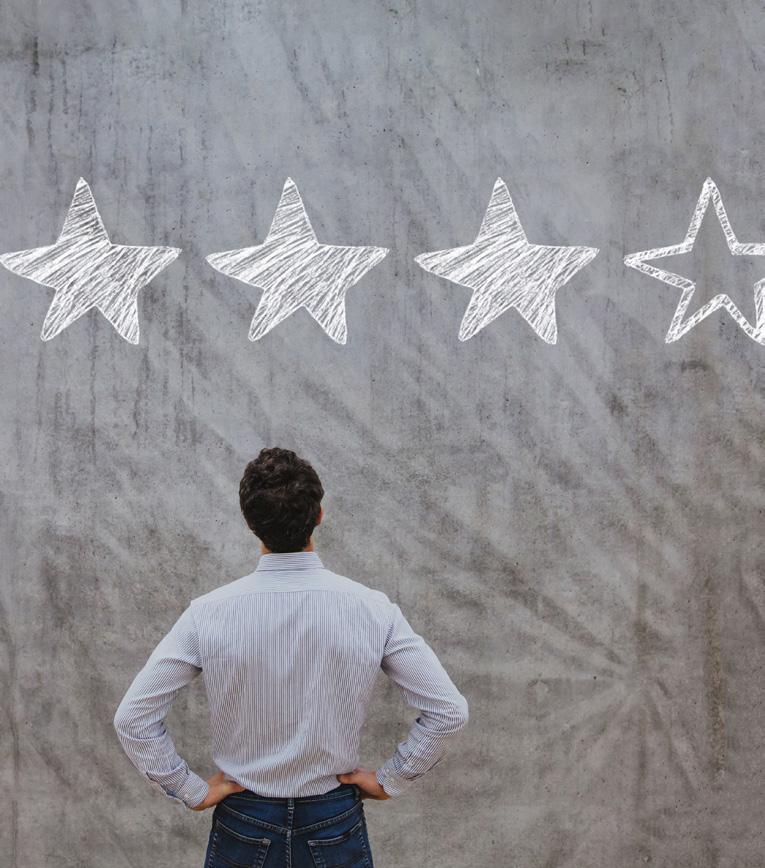
Questions you need to ask your attendees, sponsors and stakeholders
Your event is in the books. You’re exhausted. You’re elated. And you’re probably a little bit curious. What did attendees think? How about sponsors? Are they likely to support your event next year?
Making time to gather feedback will tell you exactly what attendees, sponsors and stakeholders loved about your event and what you can do to make it even better next time. Surveys are the most effective way to solicit authentic, usable feedback while your event is still fresh in their minds. But what exactly should you be asking to who and why? Keep reading to find out.
QUESTIONS FOR YOUR ATTENDEES
1. Why did you decide to attend the event?
Knowing what made an attendee make the decision to buy a ticket is just as important (if not more) than learning about their event experience. This can help you focus your content for future events.
2. How likely are you to tell a friend about this event?
The true test of an attendee experience is to see whether or not they’d bring a buddy along. After all, 65% of people are more likely to purchase a product that a friend shared with them.
3. How would you rate the organization of this event?
This response can be helpful in finding weak spots you may not have seen.
4. What could we do to make your event experience easier or more convenient? It’s not easy to admit your event wasn’t perfect. But this question builds trust through transparency—your honesty to ask this question will elicit an honest answer from your attendee.
5. How would you rate [this part]?
This is the quickest way to get feedback that you can quantify and compare. It’s also easy to answer. Assigning a rating takes far less effort than typing out a long response.
6. Do you have any other suggestions?
This question performs double duty by gathering information for your next event, in addition to evaluating the last event.
28 | insights magazine ARTICLE 2
QUESTIONS FOR YOUR SPONSORS
1. What are your thoughts on the event as a whole?
Reaching out to your sponsors for event feedback shows them that you weren’t in this only for their money or assistance— but that you appreciate their opinion as collaborators.
2. Why did this event have a positive impact on your business goals?
Let your sponsors tell you, in their own words, the benefits (or potential challenges) of partnering with you and your event.
3. How likely are you to tell others about a sponsorship opportunity with us? Some people don’t give perfect scores. Even if they had a wonderful time, they assume there’s always room for improvement. However, if you ask a question about recommendations to friends and colleagues, you’re taking the perfection bias out of it. Now, they either will or won’t recommend you.
4. Will we see you again next year?
If you create a pool of sponsors and partners who will take part in most of your events, you’ll make things much easier for yourself, in terms of future events organization.
QUESTIONS FOR YOUR STAKEHOLDERS
1. Did this year’s event meet your expectations? Why or why not?
It’s not easy for anyone to gauge their own assumptions about an experience until it’s over, which is why including this question along with a prompt to further explain their answer is often more insightful than simply checking ‘yes’ or ‘no.’
2. What did you enjoy most/least about the event?
Get insight into what they might want more or less of at future events. Remember to address any concerns or negative feedback personally and do your best to apply the note when it's applicable.
3. Was the event length too long, too short or about right?
Sometimes, people can’t get enough of your event—for the first two hours. Then they get bored. Or they’re just getting into it, and then it’s over. Since stakeholders are experiencing more of the event, they can be better judges of how the event flow felt, which can have a major impact on overall satisfaction.
By getting the answers to these questions, you can better address the larger question of your event, “how do I know if my event was successful?” Being able to answer these questions for leaders and stakeholders is vital to the future of your event.
insights magazine | 29
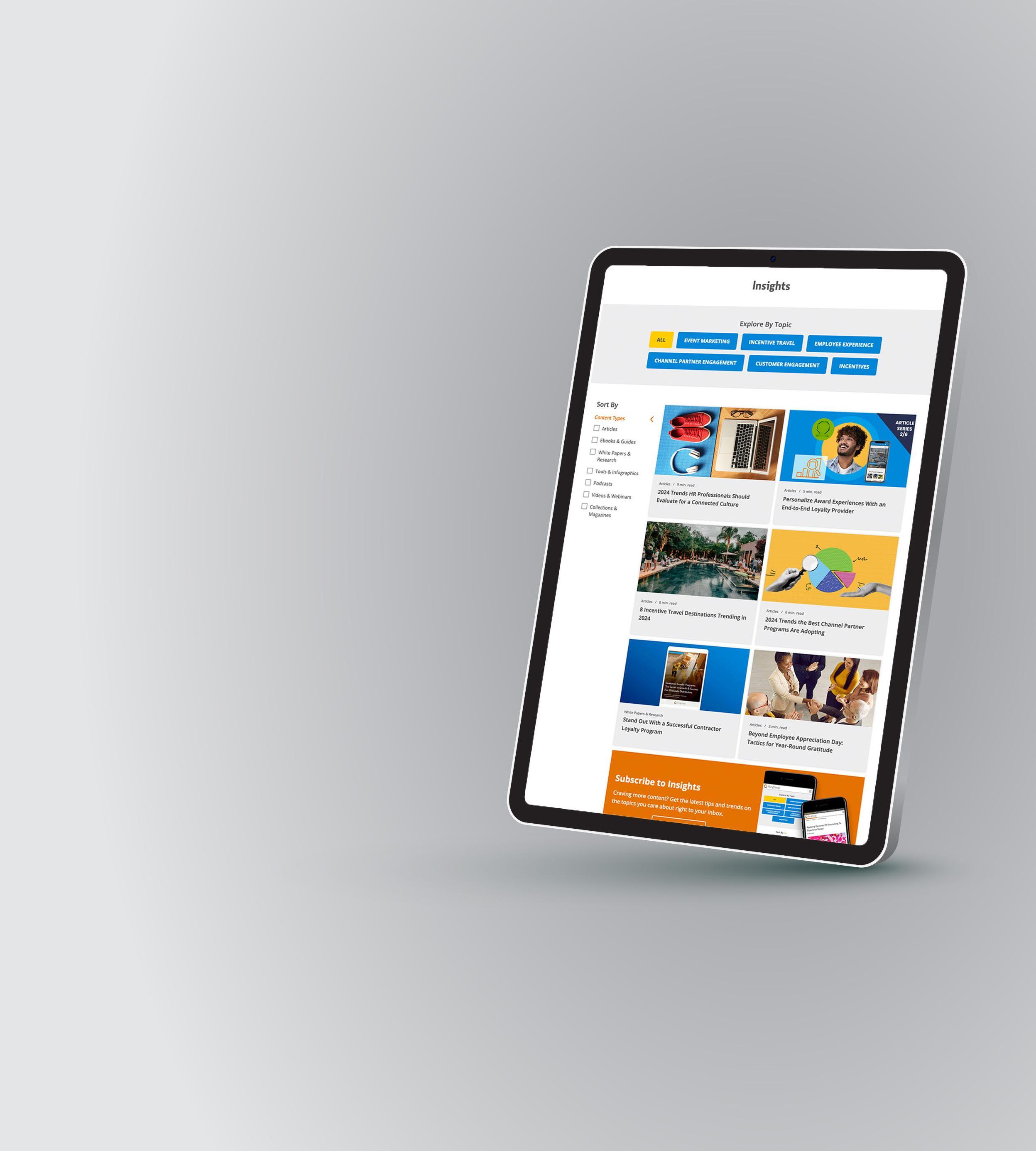
Craving more content? Get the latest tips and trends on the topics you care about right to your inbox. Event Marketing Incentive Travel Employee Experience Channel Partner Engagement Customer Engagement Incentives Subscribe to Insights info.itagroup.com/insights ITA Group® and the ITA Group logo are registered trademarks of ITA Group, Inc. All rights reserved.













 SUCCESS STORY
SUCCESS STORY

 By: Erica Lalk, Senior Manager–Strategy Team Leader
By: Erica Lalk, Senior Manager–Strategy Team Leader












 By: Jodi Swailes, Event Destination Strategist
By: Jodi Swailes, Event Destination Strategist












 By: Anna Boggs, Analytics Advisor
By: Anna Boggs, Analytics Advisor


